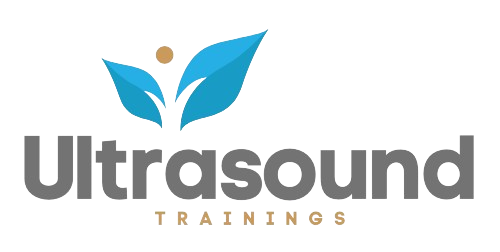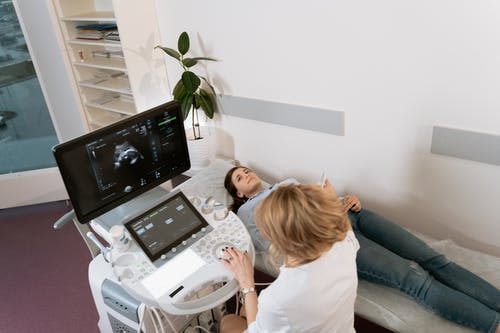Ultrasound is one of the most widely used imaging tools in healthcare today. From confirming pregnancy viability to evaluating cardiac function, point-of-care ultrasound (POCUS) and diagnostic scans provide real-time insights across nearly every specialty. Physicians, midwives, nurse practitioners, physician assistants, and nurses all use ultrasound as part of their clinical toolkit.
But with its increasing availability comes an important question: How safe is ultrasound? At Ultrasound Trainings, we believe every provider should understand both the evidence and the best practices surrounding ultrasound safety.
The Basics: How Ultrasound Works
Unlike X-rays or CT scans, ultrasound does not use ionizing radiation. Instead, it uses high-frequency sound waves that bounce off tissues and organs to create real-time images. Because there’s no radiation exposure, ultrasound has long been considered a safer alternative for many diagnostic needs, especially in pregnancy and pediatrics.
What the Research Says About Safety
For decades, large-scale studies and ongoing reviews have consistently shown no harmful effects when ultrasound is used within established guidelines. Organizations such as the World Health Organization (WHO), the American Institute of Ultrasound in Medicine (AIUM), and the Food and Drug Administration (FDA) all recognize diagnostic ultrasound as safe when performed by trained professionals.
That said, safety is not about the technology alone—it’s about how it is used. Prolonged, repeated, or unnecessary exposure should be avoided, especially when the exam provides no medical benefit.
Key Principles of Ultrasound Safety
Every provider should be familiar with the “As Low As Reasonably Achievable” (ALARA) principle. This means minimizing ultrasound exposure while still obtaining the information needed. Some best practices include:
- Use ultrasound only when medically indicated—avoid unnecessary “keepsake” scans.
- Keep exposure time short—the goal is information, not prolonged scanning.
- Use the lowest possible settings—adjusting output levels reduces unnecessary energy exposure.
- Stay updated on guidelines—professional recommendations evolve as technology advances.
At Ultrasound Trainings, we incorporate ALARA into every course, ensuring providers gain not just technical skill but also ethical understanding of responsible use.
Addressing Common Safety Concerns
- Heat and Mechanical Effects: Ultrasound does generate small amounts of heat and mechanical vibrations, but under diagnostic settings, these are well within safe thresholds.
- Fetal Ultrasound Safety: Multiple studies have found no long-term risks associated with prenatal ultrasound when performed appropriately. Still, limiting exposure to what is clinically necessary remains best practice.
- Operator Training: The most significant safety risk often comes from untrained or undertrained operators. Proper education is essential to protect patients and ensure accurate results.
Why Training Matters for All Providers
Whether you’re a physician using ultrasound in critical care, a midwife checking fetal presentation, a nurse practitioner assessing gallbladder disease, or a PA performing emergency scans, safe practice depends on training. Understanding how to interpret images, adjust settings, and respect scope of practice ensures that ultrasound benefits patients without introducing unnecessary risk.
At Ultrasound Trainings, we focus on equipping all providers with both the hands-on skills and the evidence-based safety knowledge they need.
The Bottom Line
Ultrasound is one of the safest, most versatile diagnostic tools available today. But like any technology, it requires skill, responsibility, and respect for patient well-being. By following established guidelines and maintaining proper training, healthcare providers can confidently integrate ultrasound into practice while ensuring safety remains the top priority.
Ready to expand your ultrasound skills? Explore our upcoming workshops and certification opportunities at Ultrasound Trainings. Together, we can advance safe, effective, and ethical use of ultrasound across all areas of healthcare.


